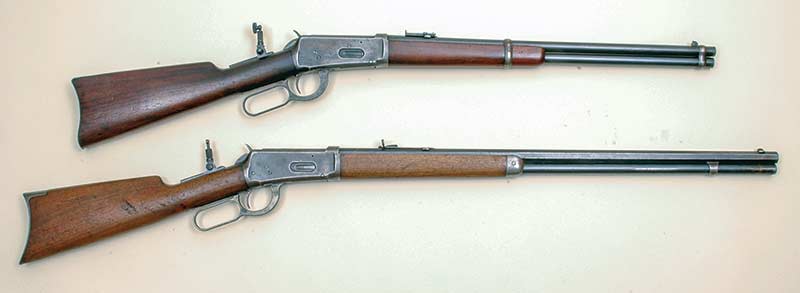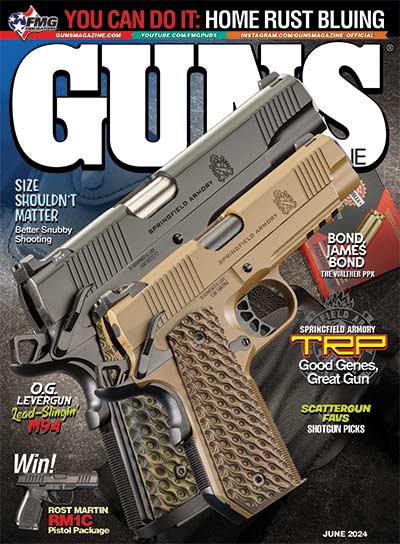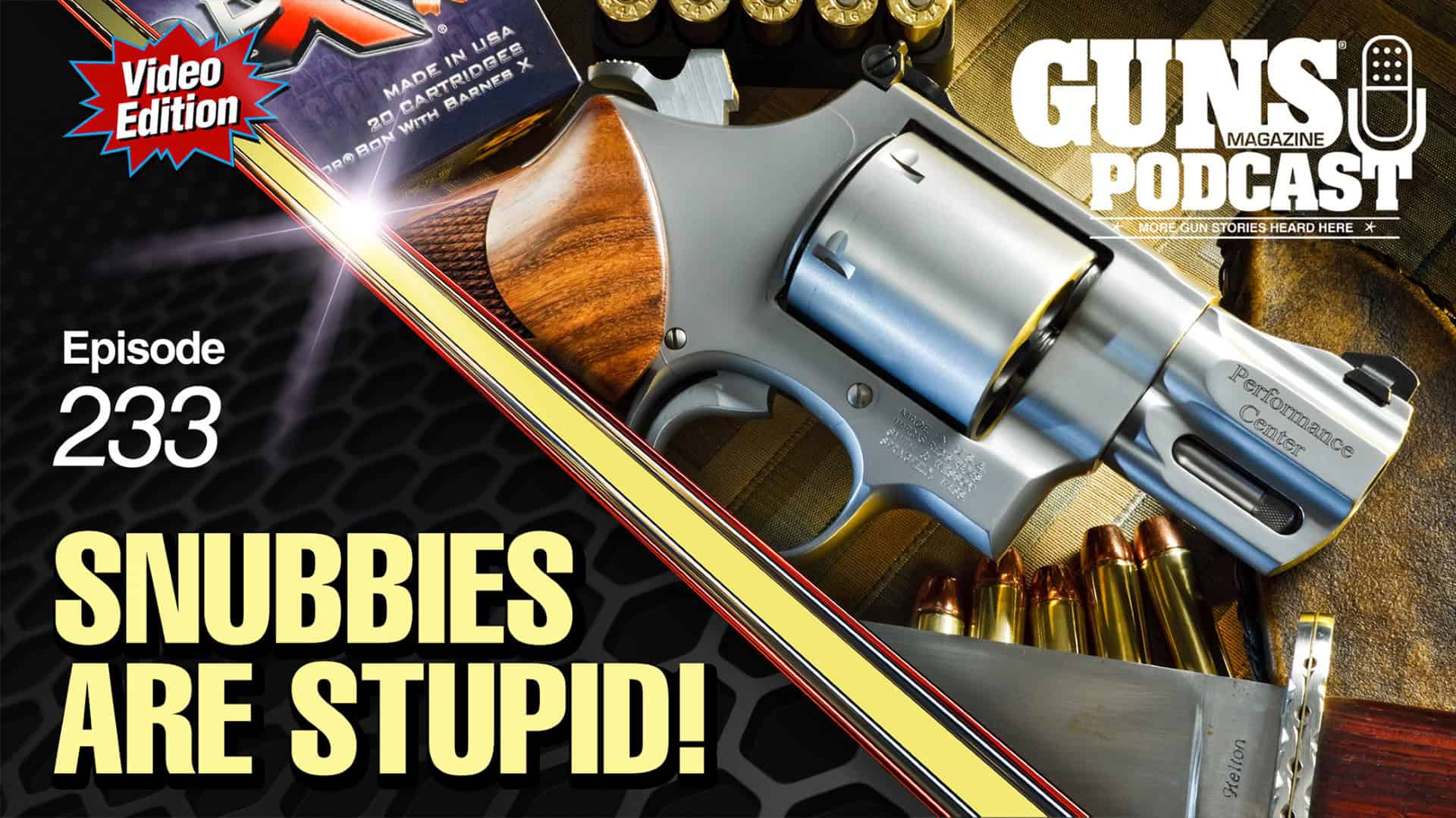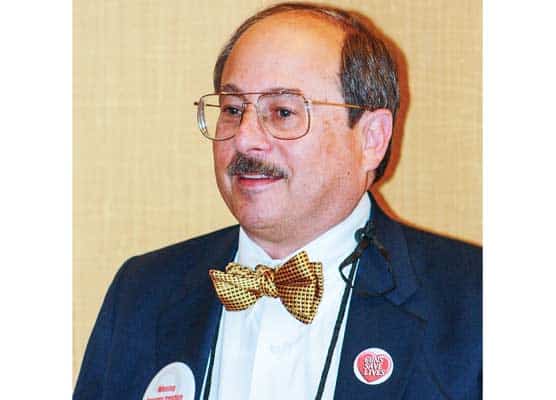The Original Winchester 1894
The Lead-Slinging Original
To generations of American shooters and hunters, the Winchester Model 1894 rifles and carbines and the .30-30 cartridge are nigh-on synonyms. That said, a lesser known fact is that first two cartridges for which the new Browning-designed Winchester lever gun was chambered were .32-40 and .38-55. Instead of the new-fangled jacketed bullets and smokeless powders of the revolutionary .30-30, the M1894s introductory rounds carried lead bullets and black powder
Reasons
How exactly did that come about? In 1894 metallurgists had not perfected the new “nickel-steel” barrels needed because the friction caused by driving metal jacketed bullets down soft steel barrels would quickly wear them out. However, those metallurgists weren’t too far behind and the new barrels did arrive on the scene by 1895.
Fortunately, the new Model 1894 Winchester wasn’t handicapped by having the .32-40 and .38-55 as its introductory chamberings as neither cartridge was a new development. Winchester had seen fit to offer both rounds in the 80-odd calibers available in Model 1885 Single-Shot, aka “High Wall.” Marlin beat Winchester by years with a “small receiver” Model 1881 lever-gun chambered only for the two cartridges in question. Marlin-owned Ballard single-shot rifles also used the pair as chambering options.
Looking back on the above paragraph, what I’m trying to get across in a rather long-winded way is that .32-40 and .38-55 rifles were well-established as excellent antelope and deer cartridges. The latter round was even touted as fine for black bears. In fact I can say I’ve used both cartridges on deer and antelope here in Montana.
A reprint of an 1899 Winchester catalog shows the .32-40 loaded with 40 grains of black powder with 165-grain lead bullets and .38-55 with 255-grain lead bullets with only 48 grains of black powder. One has to wonder why the amount of black powder in the latter round didn’t match the “55” in its cartridge name. Incidentally, Winchester’s “lead” bullets for these two cartridges were actually an alloy of one part tin to 40 parts pure lead.
Any Way You Want It
Back to the Model 1894 — as listed in the above-mentioned 1899 Winchester catalog in rifle form, the model 1894 came standard with a 26″-round barrel for $18. Octagon barrels cost $1.50 more. Saddle-ring carbines had a 20″ lightweight round barrel and cost $17. Stocks on both rifles and carbines were plain oil-finished walnut. It’s worth mentioning in those days Winchester Repeating Arms welcomed custom orders. The 1894 could be had with half octagon/half round barrels, extra-short or extra-long barrels, pistol grip stocks, set triggers, engraving and a myriad of other options.
Along the way I’ve owned standard rifle and carbine Model 1894s for .32-40 and .38-55 but in my permanent collection, I kept the rifle version for .38-55 and the saddle ring carbine version for .32-40. Worth noting is when I first bought a Model 1894 .32-40, the cartridge had been discontinued!
However, in the early 1980s, Winchester did bring out some commemorative .32-40 factory loads as a salute to John Wayne. They had 165-grain jacketed bullets in nickel-plated cases. I bought five 20-round boxes of the JW stuff, pulled the jacketed bullets and used the nickel-plated cases for handloading hundreds of rounds over a period of years. By the time the JW nickeled cases began suffering cracked case mouths, Winchester had ran a supply of regular brass .32-40 cartridge cases. I invested in a couple hundred rounds
Still Extant
The .38-55 was a different story. Winchester still produces a 255-grain factory load and again I pulled factory jacketed bullets to use the cases for handloading. Black Hills also offers lead bullet .38-55 factory loads in their Cowboy line of ammunition.
Personally I prefer lead-alloy bullets for these two cartridges. RCBS offers a mold number 32-170FN that drops 0.323″ bullets of 1-20 tin to lead alloy. They are a gas check design, which I favor for smokeless propellants. Loaded over 15 grains of Accurate 5744 powder, they work perfectly in my .32-40 saddle ring carbine.
RCBS also formerly cataloged a mold number #38-255FN designed for gas checks. It dropped bullets of 1-20 alloy at about 0.379″. Someone talked RCBS into reducing the mold design to #37-255FN with its bullets dropping at about 0.375″, making them useless for vintage Winchester .38-55 barrels. All of Winchester’s .38 caliber rifles except the .38-40 used a nominal barrel groove diameter of 0.379″. Modern .38-55 barrels are usually 0.375″ across their rifling grooves. The RCBS discontinued mold number can easily be duplicated by custom mold makers.
I load my .38-55 cartridges with 19 grains of Accurate 5744. Both my favored .32-40 and .38-55 handloads clock in the 1,300 to 1,350 fps range.
I’ve owned the Model 1894s for all five of its original cartridges (.25-35, .32-40 .30-30, .32 Special, and .38-55). It’s perhaps a window into my soul, the only two that stuck were chambered for .32-40 and .38-55. Duke doesn’t need those new-fangled jacketed bullets for his Winchester lever guns!





